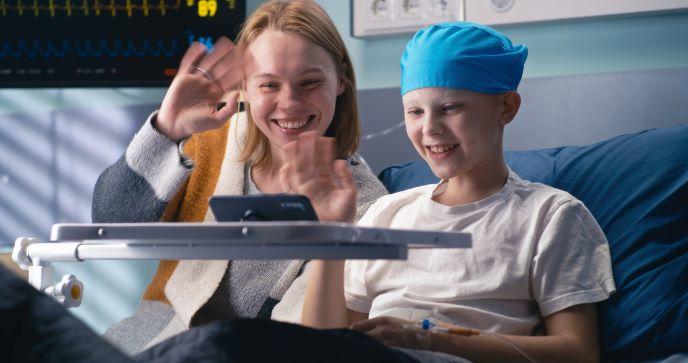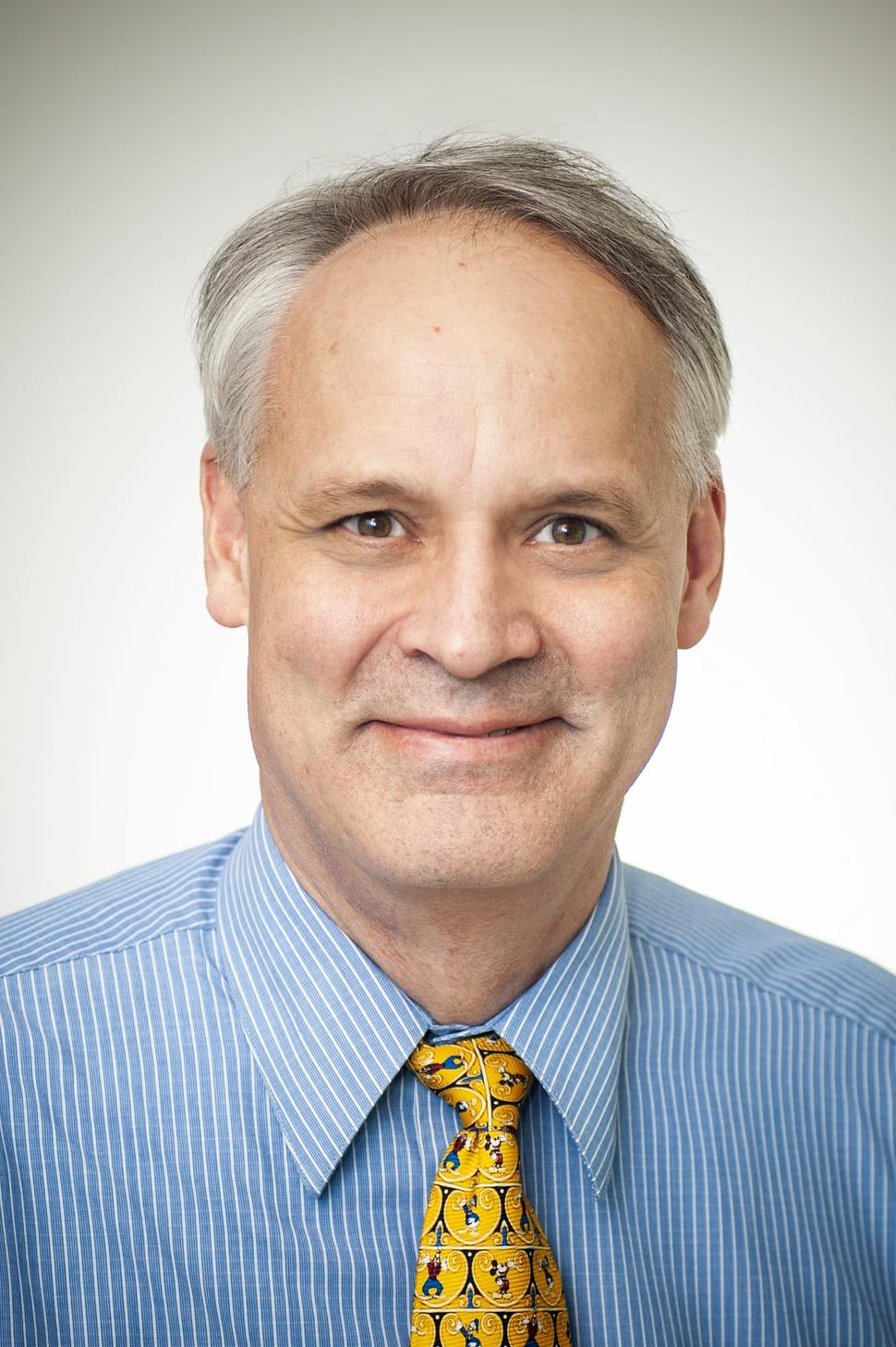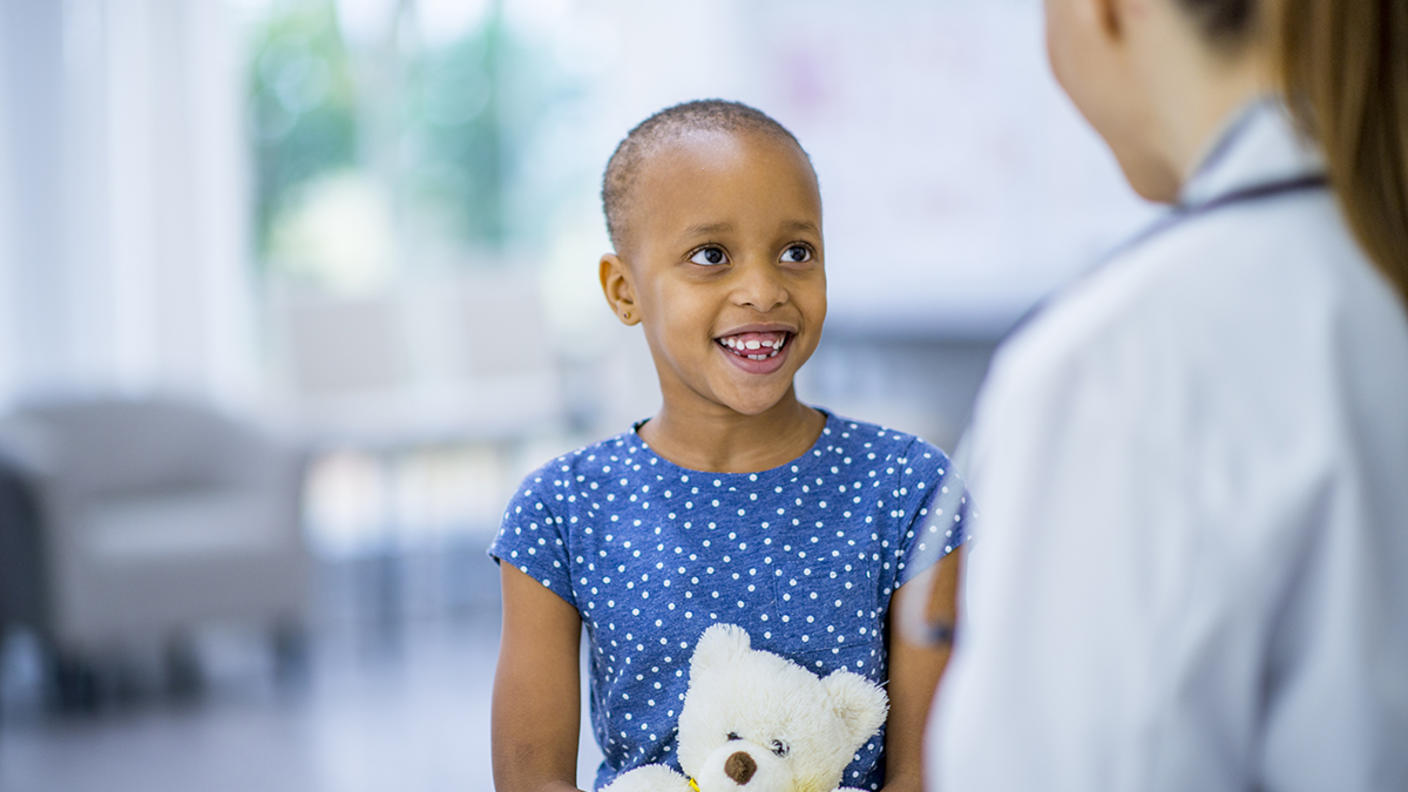Making Transformative Advances against Childhood Cancer: A Conversation with Dr. Doug Hawkins
, by Carmen Phillips
Clinical trials conducted by the Children’s Oncology Group (COG), an NCI-funded network of researchers and hospitals, have been among the biggest contributors to improvements in the treatment of children with cancer and the continued increase in cure rates for several childhood cancers. Formed in 2000 through the merger of four childhood cancer research organizations, COG has about 100 active clinical trials studying potential new treatments and ways to improve existing treatments at any given time. These trials also often include related studies to help researchers better understand the biology of childhood cancers.
In this Q&A, COG Chair Doug Hawkins, M.D., a pediatric oncologist at Seattle Children’s Hospital, discusses how COG functions and how it's working to improve the care and extending the lives of many children with cancer.
What are some of the biggest changes you’ve seen in childhood cancer since you first started practicing?
So much has changed. I graduated from medical school in 1990, and nearly everything about how we treat cancer [in children and adults] has changed, and on so many levels.
When I started practicing, for instance, we didn't have good medicines for treating nausea. In 1991, ondansetron (Zofran) was approved by the [Food and Drug Administration], and that was a transformative medication because it allowed us to give children chemotherapy with much less nausea and vomiting. And when I started, we didn't have filgrastim, which stimulates the bone marrow to recover from cancer treatment faster. Before that, patients might spend days in the hospital after treatment with fever and low blood counts.
So these are just very basic supportive care measures that may not have changed cancer outcomes, but they certainly changed the cancer experience for kids and adults alike.
Next, our understanding of cancer has been radically transformed. At one time, we would describe a patient’s cancer only by what it looked like under the microscope. Now we describe the molecular changes inside the cancer that transformed it from a normal cell to a cancer cell. And, especially for the way we treat children with leukemias, we now adjust treatment based on these molecular changes.
I think you also have to single out CAR T-cell therapy. The results we have seen in kids with leukemia—like acute lymphoblastic leukemia, or ALL—with the CD19 CAR T-cell therapies has just been amazing. We’re talking about treating children who had no other treatment options and curing them with a cellular therapy that's made from the child's own T cells. That's been really remarkable.
The hope is we’ll be able to translate that into success against other types of cancers in children, including solid tumors and brain tumors.
Are there areas where progress has been lacking?
The lack of progress is still a big issue. There are childhood cancers that we still treat with the same chemotherapy medicines we used when I started practicing 30 years ago. And treatment hasn't changed for certain types of brain cancers like diffuse intrinsic pontine glioma, or DIPG. The survival rate for that cancer has not changed in 50 years.
Especially for solid tumors our progress has been somewhat stagnant, and mostly it's because we haven't identified very specific therapies that could transform how children with these cancers are treated.
But we are starting to catch up. Take the development of larotrectinib (Vitrakvi), which is a targeted inhibitor that we can now use to treat kids with solid tumors that has a specific molecular change. So there are now some tangible signs of progress.
One thing you hear about children with cancer is that they aren’t just little adults, that treating a child is much different than treating an adult. Can you explain why that is?
There are multiple ways that they are different. The first, I would say, are the goals of care.
Take an 80-year-old with cancer. We’re not thinking about getting that person 40 years of survival, right? Instead, we’re thinking about prolonging their life and ensuring quality of life by managing side effects and symptoms.
When we talk about children with cancer, our goal is cure and restore them to lifelong health. For a child who's treated at age 3, the goal is to give them 70 or 80 more years of life. So the whole mindset is different.
We also worry about long-term side effects of treatment much more in children than we do in adults. In addition to hopefully having a long lifetime ahead of them, a child's body is growing and developing. So the consequences of giving brain radiation, for instance, to a 3-year-old compared with a 43-year-old are dramatically different.
You have the same thing with growth. If you're delivering radiation to a child’s bone or limb, then it could dramatically affect the growth of that bone or limb. You just don’t have that same concern with adults.
On the positive side, children's organs—their heart, their lungs, their kidneys—are healthy to start with, and so they may actually be able to tolerate more intensive treatment.
And let's remember that a 2-year-old usually can't swallow a pill. … I give a lot of credit to the pharmaceutical companies that, when they develop a new drug that’s a pill, they say, “We need to create a liquid formulation [for children] right away.” Not all companies do that, but some have.
Many people may have heard of COG but don’t know much about it. How does it work?
It’s quite an undertaking. Of course, COG is funded by NCI and is part of NCI’s larger clinical trials program, the National Clinical Trials Network. COG includes about 230 institutions; most are in the United States, but some are in Canada, Australia, New Zealand, and Saudi Arabia.
The reason we need a network this large is because pediatric cancer is fairly rare. In the United States, for instance, about 16,000 children under 20 years of age are diagnosed with cancer every year. By comparison, 1.9 million adults are diagnosed with cancer each year in this country.
So if you want to really capture a large percentage of these children in a clinical trials system, you need a network the size of COG. In fact, almost every child diagnosed with cancer in the United States will receive care at a COG member institution at some point. So that allows us to have a much larger impact than is possible with adult cancer, where care is fragmented into many different hospitals [that aren’t part of a larger network].
How many kids with cancer receive their treatment as part of a COG clinical trial?
It’s often been reported that nearly all do, but that’s not true. The best data we have, which is from 2004 to 2015, is that about 20% of kids diagnosed with cancer before age 20 receive their initial treatment on a COG study.
But it also varies by cancer type. About 57% of children with ALL, which is the most common childhood cancer, receive their initial care as part of a COG study. So for certain cancers, it's really common to get the treatment as part of a COG study, but for others, mostly solid tumors, it’s a lower percentage.
Some big childhood cancer initiatives have been launched over the last few years that pediatric cancer researchers are very excited about. Can you talk about COG’s involvement in these efforts and their impact?
One area of initiatives over the last several years are those focused on large-scale sequencing of tumor samples from children with cancer. That includes sequencing done as part of the NCI-funded TARGET program and the Gabriella Miller Kids First program. Many of the investigators for these two efforts are COG members, and most of the specimens came from COG studies or its biobank.
What these programs have allowed us to do is analyze thousands of tumors so that we can better understand the underlying genetic changes that cause these cancers, as well as inherited factors that may predispose children to specific types of cancer.
We’re now using that information to identify new ways to potentially treat different cancers as well as to adjust how we use currently available treatments to do things like reduce the risk of a child’s cancer coming back. COG often uses these newly identified biomarkers to guide treatment for patients enrolled on its clinical trials.
These large-scale tumor sequencing efforts are helping transform our understanding of cancer and its treatment.
What about programs like the Childhood Cancer Data Initiative (CCDI) and the Molecular Characterization Initiative (MCI)?
When it comes to childhood cancer, we have lots of data on these children’s tumors. But most of that data lives in unconnected silos. So you have one pile of genomic data here, another pile here, another pile here. But that data would be much more powerful if it was connected—and if it connected data from not just 20 or even 200 children, but 10,000 children.
That was one of reasons that COG started Project:EveryChild in 2015. Project:EveryChild is an international pediatric cancer registry, available at all COG institutions, that collects clinical information about patient treatment and outcomes, allows for banking of tumor tissue and blood for research, and asks permission for future contact. It provides a foundation on which we can launch even larger projects, like CCDI and the Molecular Characterization Initiative.
So the crux of CCDI is aggregating all of this siloed data and making sure that the community of researchers have access to it so they can mine it and use it to make discoveries that, honestly, might otherwise never happen.
The Molecular Characterization Initiative is a component of CCDI that's trying to address a specific problem: not all clinicians taking care of kids with cancer have access to the most up-to-date technologies for sequencing tumors. But if they did, the information they would get from that sequencing could be important, including changing that child’s diagnosis and, thus, the treatments they would receive.
This is where the MCI comes in. Starting in the spring of 2022, through the MCI, we started providing this tumor sequencing to children with cancer who enrolled on Project:EveryChild. This protocol allows us to collect tumor tissue and blood samples from that child, plus all of their clinical information. That tumor tissue and blood is then sent to a centralized laboratory, and within 3 weeks the lab returns comprehensive sequencing data to that child’s doctor that can be used to confirm or modify their diagnosis and guide their treatment.
We began the MCI by offering sequencing for children with brain cancers and have since expanded to include children with soft tissue cancers called sarcomas. To date, samples from more than 400 children have been sent in and results returned. We have individual examples of how these results have changed patients’ diagnoses or the kind of treatment they're being offered. So this is not just a pipe dream. It’s happening now.
As of this month, we're expanding sequencing to include children with rare tumors, which is a whole variety of different types of cancers, mostly carcinomas. When the MCI fully rolls out, we expect to be able to collect and sequence tumor samples for about 3,000 children with cancer every year.
No one has ever tried to do something like this on this large a scale in the United States.
COG has conducted many important studies over the years. What are some recent trials that have had a particularly significant impact on patient care?
Yes, there are several. One somewhat recent example is a study we did for children with ALL that had come back, called AALL1331. Typically, these children would receive chemotherapy, but in this trial we tested whether we could substitute an immunotherapy drug called blinatumomab (Blincyto) for the chemotherapy.
And the treatment was much, much better. The chances of remaining in remission and being cured was much higher in children who got blinatumomab, and they had fewer side effects. So it was exactly what we hoped to achieve: more effective treatment against the cancer with fewer side effects. It was really transformative for how we think about treating what is the most common childhood cancer.
Another important study involved children with a particular subtype of acute myeloid leukemia called APL, or acute promyelocytic leukemia. Most patients in the study received two targeted agents, arsenic trioxide and all trans retinoic acid, which is a vitamin. Most children in the study only got these two drugs, not standard chemotherapy, and the cure rate was nearly 100%.
And, finally, in terms of solid tumors, probably the most transformative study we did started in the early 2000s for children with high-risk neuroblastoma. The study tested a drug called dinutuximab (Unituxin), and it took a long time to complete, but the results led FDA to approve dinutuximab for these children.
As you said, you worry about long-term side effects of treatment much more in children than in adults. How does COG approach studies testing ways to reduce the side effects of cancer treatments?
For these types of studies, you have to start with cancers that have a high cure rate and then say, “What part of treatment is causing long-term side effects? Let's try to eliminate it.”
Radiation is one example. Giving radiation to the brain is associated with long-term learning and developmental problems. And so, if we could eliminate cranial radiation, that would prevent those side effects, right?
In one type of leukemia, T-cell ALL, previously we gave radiation to the brain to more than 90% of patients. In a recent study, we reduced the rate from 90% to 9.5% and there was no difference in the cancer outcome. But we eliminated radiation for over 80% of patients.
Another example is Hodgkin lymphoma, one of the most common types of childhood cancer. It has a very high cure rate, but we know that a lot of kids have lasting side effects not only from radiation but also from some of the chemotherapy medicines we give, including doxorubicin, which can affect the heart.
So, in a study that we're going to launch early next year, we’re going to test reducing the amount of chemotherapy by substituting a combination of two immuno-oncology drugs. The hope is that we can maintain the very high cure rate for Hodgkin lymphoma but eliminate the long-term effects of treatment on the heart.
What do you think has been the key to COG’s success in carrying out so many studies that directly affect the care of children with cancer?
I think COG works so well because of the ethic of collaboration built into it. Everybody involved is committed to working together in such an unselfish way to advance progress against childhood cancer.
I'm lucky because I get to be interviewed by journalists and talk about the work COG does. But behind me are thousands of doctors and nurses and pharmacists who are all part of COG and deeply committed to making our studies work.


